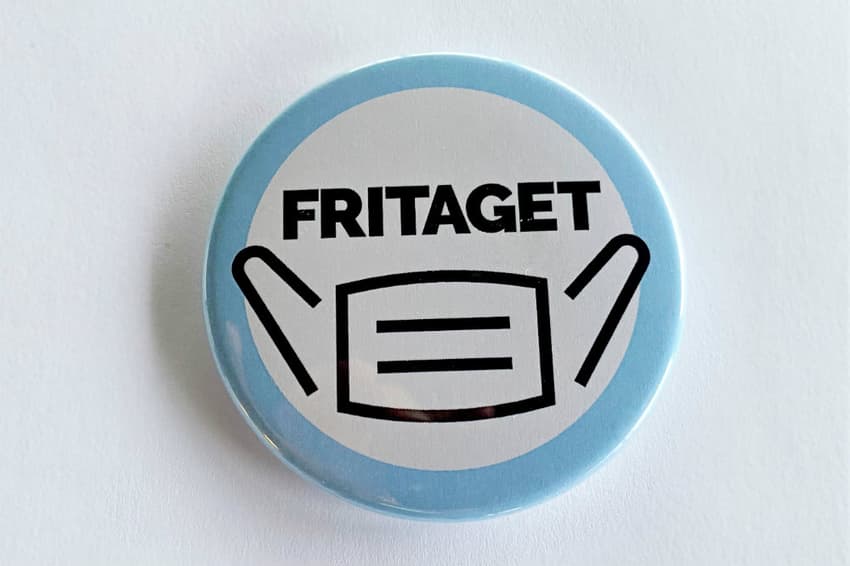Denmark introduces badge for non-face mask wearers

A new badge will allow people in Denmark to signal they are unable to wear face masks for health reasons.
The badge can be worn by people who are exempted from Denmark’s current requirement to wear face masks in all public indoors areas, including public transport and supermarkets, the Danish Health Authority said in a statement.
It consists of a picture of a face mask along with the word fritaget -- 'exempt' in Danish.
Health conditions that can affect breathing, such as asthma and chronic obstructive pulmonary disease, as well as anxiety, are included as valid reasons for not wearing the protective covering.
Danish Health Authority head of department Niels Sandø said the new badge would prevent people from being shamed for not wearing a face mask.
“There have been situations, such as in supermarkets, where members of the public have been looked at strangely or had other customers demand they explain why they are not wearing a face mask or visor,” Sandø said in a statement.
“It can be very unpleasant for individuals to be subjected to that. To avoid such situations, we have brought out a badge,” he said.
It should be noted that wearing the badge is not a requirement for people who are not required to wear a face mask.
“The badge should be a reminder to the surroundings that there is someone who can’t wear a mask or visor,” Sandø said.
“We can therefore ask everyone to be tolerant towards each other and remember that there might be a good reason someone is not wearing a face mask or visor,” he added.
The badge can be order via relevant patient societies and municipal institutions such as shelters, and can also be ordered via printer Rosendahls.
The Danish Health Authority has previously released a badge which can be worn to remind others to maintain a social distance.
READ ALSO: Why people in Denmark are wearing 'social distance badges'
Comments
See Also
The badge can be worn by people who are exempted from Denmark’s current requirement to wear face masks in all public indoors areas, including public transport and supermarkets, the Danish Health Authority said in a statement.
It consists of a picture of a face mask along with the word fritaget -- 'exempt' in Danish.
Health conditions that can affect breathing, such as asthma and chronic obstructive pulmonary disease, as well as anxiety, are included as valid reasons for not wearing the protective covering.
Danish Health Authority head of department Niels Sandø said the new badge would prevent people from being shamed for not wearing a face mask.
“There have been situations, such as in supermarkets, where members of the public have been looked at strangely or had other customers demand they explain why they are not wearing a face mask or visor,” Sandø said in a statement.
“It can be very unpleasant for individuals to be subjected to that. To avoid such situations, we have brought out a badge,” he said.
It should be noted that wearing the badge is not a requirement for people who are not required to wear a face mask.
“The badge should be a reminder to the surroundings that there is someone who can’t wear a mask or visor,” Sandø said.
“We can therefore ask everyone to be tolerant towards each other and remember that there might be a good reason someone is not wearing a face mask or visor,” he added.
The badge can be order via relevant patient societies and municipal institutions such as shelters, and can also be ordered via printer Rosendahls.
The Danish Health Authority has previously released a badge which can be worn to remind others to maintain a social distance.
READ ALSO: Why people in Denmark are wearing 'social distance badges'
Join the conversation in our comments section below. Share your own views and experience and if you have a question or suggestion for our journalists then email us at [email protected].
Please keep comments civil, constructive and on topic – and make sure to read our terms of use before getting involved.
Please log in here to leave a comment.